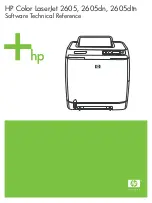
How Do I Make Use of the Spanning Feature?
2-72
RAID EzAssist User’s Manual
which to define logical drives. Therefore, the largest logical drive I
can define would make use of the full 18.0 GB in both arrays.
☛
Note
In the examples above, keep in mind that actual
available “logical” capacity for defining logical drives
will be less than the stated physical capacity when
fault tolerance overhead is considered (in all RAID
levels other than RAID 0 and JBOD).
Spanning Requirements
Specific requirements are necessary if you wish to use spanning:
1. You must enable spanning using the Spanning option on the Custom
Configuration menu before you build disk arrays or define logical
drives on your controller that you intend to span.
2. Spanned disk arrays must have the same number of physical drives in
each array, AND must be defined consecutively. See Table 2-5 for
examples of when spanning is and is not allowed.
Table 2-5. Examples of Spanning and Non-Spanning Situations
You must specifically build your disk arrays in Custom Configuration
with this in mind.
Array Configuration
Spanning Allowed?
A0 only
(any number of drives)
NO. Spanning requires at least two disk arrays.
A0 = 2 drives
A1 = 2 drives
YES. Consecutive arrays have the same number of
physical drives.
A0 = 3 drives
A1 = 2 drives
NO. Spanning requires that consecutive arrays have
the
same number of physical drives
.
A0 = 2 drives
A1 = 3 drives
A2 = 2 drives
NO. Spanning requires that
consecutive
arrays have
the same number of physical drives. Spanning is not
allowed between A0 and A2.
A0 = 3 drives
A1 = 3 drives
A2 = 3 drives
YES. Consecutive arrays have the same number of
physical drives. Spanning is allowed across all three
disk arrays.
















































